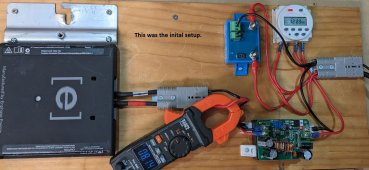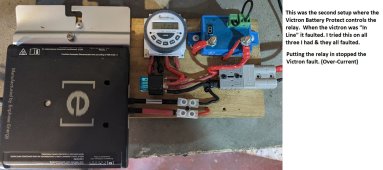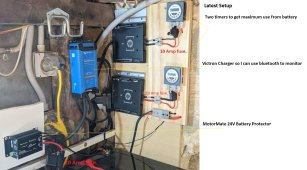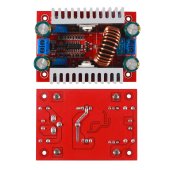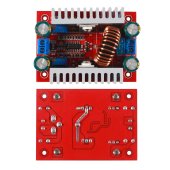Note: Over the last three years I have tested so many combinations of devices you would not believe.
Starting with a computer UPS that 4 different electricians said would not work.
What I have distilled is our best observations, that we have shared, over that time.
OK, so the Micro-Inverter directly connected to battery is still running fine, right?
_Yes that is correct
Assuming ~95% efficiency of your Micro-Inverters, 200WAC out requires 210WDC in which is 8.4A @ 25VDC.
_I don't bother working out efficiency.
_With Micro-Inverters I just add more panels if I need more juice.
Would appreciate it if you could provide your Micro-Inverter model or better yet, tell us what it’s maximum input current rating is…
_Enphase M215 is the main model I use.
_Maximum input current is 10.5A
https://www.adelaidesolarsafe.com.au/docs/enphase/Enphase_M215_Micro_inverter.pdf
300WAC out requires 315WDC in or 10.5A @ 30VDC out of your voltage booster.
_Yes that is correct.
_Initially I bought the Boost Converters to "control" the current because articles on DIYSolarForum & other places said connecting directly to the battery would fry the Micro-Inverters.
_After buying 3 boost converters I thought I could replicate the above on all three but I could not get any two adjustments the same.
_I tried about 4 different types of cheaper type Boost Converters (up to about AUD $95) but they all had some sort of issue. (Usually adjustment)
_There is certainty in my mind that there may either be a more expensive type of Boost Converter out there that will do the job (I have seen some) or a much better sub $100 Boost Converter will soon be available.
_In the end I tried connecting one Micro-inverter directly and it worked. Talk about the hard way!
And if the booster has efficiency of ~95%, the booster is taking input power of 332W = 13.3A @ 25VDC from the battery.
_Your calculations are correct.
_I don't bother working out efficiency. I did it a few times but I don't see the point.
_With Micro-Inverters I just add more panels if I need more juice.
Sounds like you are either using two different Micro-inverters or perhaps you are pumping the battery voltage up to higher than 32VDC???
_There are 4 different types of micro-inverters on our roof 3 x Enphase 1 x SunnyBoy
_M215's are all I have used for no particular reason. (I got a box of 40 of these M215's for $30 Each brand new)
So you’ve been running both direct-connect and through-booster configurations for over two years now and both have worked fine over that period of continuous use.
_That is correct
Since the booster was not needed, adds complexity, and reduces net efficiency, you’re going to convert that boosted setup to direct-connect as well.
_I did not say "reduces net efficiency" but the Boost Converter runs relatively warm. Add in the reasons outlined above & you can see our train of thought.
_Adjusting the current crop of Boost converters is too hard for a lot of people and more mistakes can be made.
_With our setup of two timers per battery I can run one Micro Inverter for 14 hours. Then if the battery deteriorates I can set the second timer to turn off inside the point where our battery protector kicks in.
_This gives us 3 levels of "protection" ...A. The Timer(s) ...B. The Victron or MotorMate Battery Protector ...C. The BMS on the battery itself
Have I understood all of that correctly?
Hopefully this question is answered.
Our mantra has always been:
To make it simple (using off the shelf parts) so any one can contribute to reducing global warming.
(One battery dramatically increases Energy Independence.)
Keep the charging & battery side separate to allow for many technologies.
Have the Inverter side separate so you can change Inverter & Battery Protector to whatever you want of fits.
This is the reason my wife & I went this way as our contribution to the environment so we could bring many others with us.
We could have bought a Tesla Battery but most people cannot afford that & are severely inhibited whilst trying to contribute.
Our system is designed to use the inevitable flood of batteries from electric cars.
Our intent was to break the Electric Car batteries down to 24Volt size initially.
If you want to start at 48Volt batteries it will save me some time.
M215's have a maximum of 45V - IQ7Plus can go as high as 60V.
I am expecting a second hand electric car battery this year. I will get an IQ7Plus & test that first.
View attachment 143092View attachment 143093View attachment 143094



